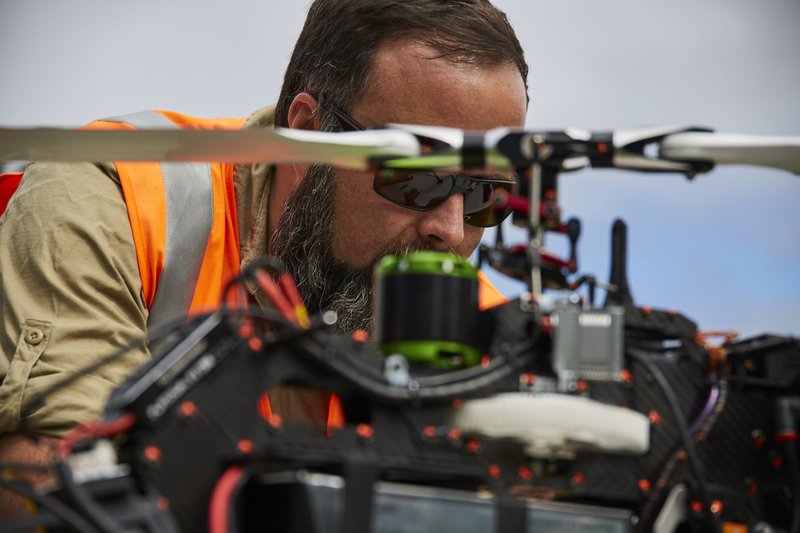19 Sep 2021
It’s an enormous machine, cobbled together over generations and running continuously for more than 100 years: the national grid. It lights our homes, charges our devices and powers our workplaces, while most of us give it barely a thought.
That is, until something goes wrong, like in early August when rolling power outages plunged tens of thousands of homes into darkness in some parts of the country. But the future of the grid and of New Zealand’s power supply more broadly is a “live” issue in 2021 as we contemplate a decarbonised future, population growth, and the increase of alternative sustainable energy sources such as solar and wind.
Over the past decade, Transpower, which owns and operates the national grid, with its 178 substations and 12,000km of high voltage lines, has spent $5 billion on boosting the network’s capacity, performance and resilience. But that’s only the opening salvo. The picture painted by the state owned enterprise’s 2018 strategy, “Transmission Tomorrow”, and its more recent blueprint for a decarbonised economy, Whakamana i Te Mauri Hiko – Empowering our Energy Future, is that we will need significantly more generation – roughly 70 percent more by 2050 – as our emissions-intensive sectors electrify and we all start driving electric vehicles (EVs).
Anticipating future needs
That’s not any reason to panic, according to Andrew Renton FEngNZ, Senior Principal Engineer at Transpower. Some of the anticipated growth in demand will be offset by improved energy efficiency, better insulated homes and other developments. And it’s not like the grid is maxing out.
“The network is never running at 100 percent capacity 100 percent of the time. Over the years, we built lots of extra capacity into it,” Andrew says. “We’re not talking here about the need for a wholesale rebuild; we don’t need to double the size of the network or anything like that. New technology provides smarter ways of doing things, and there will be lots of opportunities for that.”
Nevertheless, there will be challenges ahead as demand grows and new sources of generation with different profiles are integrated. Transpower’s Net Zero Grid Pathways project, currently in the consultation phase, is about getting a read on how and where solar and wind power is likely to be generated, how quickly demand is increasing, and what this will entail for the network.
“We’re not only looking at this from the systems operation perspective – considerations such as system strength, voltage, inertia – but also looking at the grid itself, the poles, wires, transformers and can all those bits accommodate it. We’re doing that over three time horizons of five, 15 and 30 years to align with the 2025, 2035, 2050 scenarios covered in Whakamana i Te Mauri Hiko,” Andrew says.
Intermittency issues have to be considered, as do the ramifications of having a more distributed and diverse bunch of generators. “Is there going to be lots of wind and solar appearing in Northland? And if so, what would we need to bring that south? Is it all going to appear in the central North Island, and what are the constraints there?” Andrew says.
Plenty of work ahead, in other words. He says a lot of the issues come from having a system that was built in a certain historical context, “and we’re now wanting it to do something else. So how can we convert what we have to provide what we need for the future?”

Setting up drone for flight
A more efficient, sustainable grid
The same question lies at the heart of work by University of Canterbury Engineering Professor Neville Watson CMEngNZ IntPE(NZ) to develop a more efficient and sustainable grid. Last year, his research team was granted $13 million over seven years to investigate how high levels of direct current (DC) from renewable electricity sources can be integrated into the grid, which runs on alternating current (AC).
Neville notes that as modern devices and appliances use DC power, converters are needed, creating inefficiency, loss and distortion.
“We’re already seeing lots of problems: irrigation pumps in rural areas, for instance. With photovoltaic (PV) generation there are issues with how much the grid can withstand, as well as loss, inertia and voltage issues.”
Neville says in Australia, they’re talking about restricting renewable energy going into the network because of problems with inertia and frequency response.
“We don’t want to have restrictions; we want a highway that can cope with future technology, to be able to add and remove things with minimal issues, whether that’s renewable energy in terms of PV, wind and other sources, or on the load side with EVs or equipment that uses DC.”
A hybrid grid of AC and DC is inevitable, he reckons. His project is about how we get there, how much we should convert to DC and where, and what tools, technology and personnel will be needed.
“What current equipment can we use? Can AC cable be used for DC, for instance? What are the limitations? What’s a likely transition path? We have a few ideas, but this is going to involve a lot of testing, planning and careful thought.”
Neville says: “By the end, we want a roadmap, to have set the goals and developed the capability of people to deliver.”
Increasing energy efficiency
What about the role of energy efficiency in all this? Robert Tromop FEngNZ has been involved in developing this country’s appliance and equipment regulatory programme, as well as evaluating energy efficiency and renewable energy policies.
“Look at a fridge today compared with one from 15 years ago. It has advanced electronics controlling the compressor and uses a lot less power – and that goes for every aspect of life,” Robert says.
“I did some work for the Green Party a few years ago looking at whether it was realistic to go out there with a 100 percent renewable electricity target. One of the key drivers was that the improvement in appliance efficiency is probably halving the rate of growth in electricity demand you’d expect from population growth. That’s huge.”
This is not, however, about “saving energy”, which is a common misreading of the benefits of energy efficiency.
“That term doesn’t work: you’re either getting more productivity out of something or you’re reducing the energy needed to produce that productivity,” he says.
“Productivity gains for industry from energy efficiency efforts and improving process systems are typically an extra 40–200 percent over the direct energy cost reduction from those measures.”
Historically, we’ve been a resource-rich country that hasn’t had the same pressure as nations such as Japan and Korea to be energy efficient. But Robert says that time has gone. Some sectors such as dairy have made big strides; others such as the government sector are badly lagging. More effort and vision are required.
“Why, for instance, do we put double glazing, floor and wall insulation in buildings when we could get a faster return and much greater carbon reductions by putting in efficient, low-carbon hot water systems?”
Looping back to the question of future-proofing our power supply, Andrew Renton says Transpower is increasingly deploying new technologies to maximise the utility of the existing network. By using drones to collect high-quality images of towers, insulators and wires, for example, Transpower can make targeted interventions rather than wholesale replacements. Better data management is also proving useful.
“In the last 10 years we’ve been adding all sorts of special protection schemes and demand management schemes so we don’t have to do a large grid upgrade, and that’s built around collecting and managing information,” he says.
“Technology gives us the ability to do more, faster, and in greater detail.”

Emrod prototype system
What about wireless?
Nikola Tesla wasn’t able to nail wireless power transmission, but a New Zealand outfit may have more success. Auckland-based Emrod is set to field trial the point-to-point transmission of energy through electromagnetic waves using proprietary beam shaping, metamaterials and rectenna technology. It follows successful indoor demonstrations at Emrod’s testing facility in which a few kilowatts of power were beamed 40m between antennae.
The breakthrough has been enabled by advances in radar and advanced materials technology, among other developments.
“As with a number of innovations, it’s about the culmination of improvements occurring throughout the world and how you bring those together,” says Emrod Product Manager Mark Tomkins, who adds that the challenge ahead is not so much about achieving greater distances, but transmitting more power. Emrod has a planned series of developments to achieve hundreds of kilowatts in the near future, and megawatts in the medium term.
What are the potential benefits if Emrod can deliver? “It can help to overcome some of the limitations of power line infrastructure such as the cost and difficulty of laying and maintaining poles, or underwater cables, over challenging terrain,” says Mark, noting that reduced infrastructure costs would improve access to power for remote and less advantaged communities. He also highlights the potential to unlock renewable energy sources.
“Wind farms and to some extent solar farms are often located in areas that are remote from grid connections. A wireless link can overcome those obstacles.”





